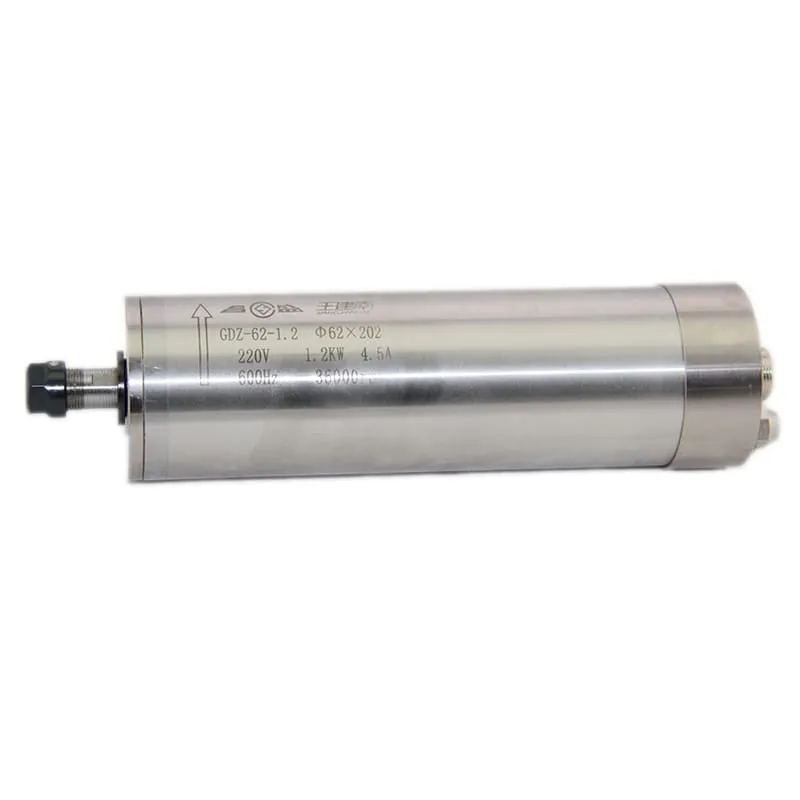The world of CNC (Computer Numerical Control) machines is vast and versatile, offering exciting possibilities for manufacturing, home workshops, and even small businesses. If you have a CNC wood router or are considering getting one, this guide is here to help you understand how to make the most of it and potentially earn an income. Whether you are a beginner, hobbyist, or professional, you can benefit from CNC machines to produce high-quality custom goods. In this guide, you’ll learn how to use a CNC machine efficiently, with strategies on how to profit from CNC woodworking projects.
What is CNC?
CNC: An Introduction to Automated Manufacturing
CNC stands for Computer Numerical Control, which refers to the technology used to control machining tools with computers. CNC machines, including routers, mills, and lathes, are controlled by specialized software that dictates their movements and cutting paths. This means you can design intricate parts digitally, and the CNC machine will reproduce them with precision, accuracy, and repeatability.
- Tools for CNC: These machines come with a variety of cutting tools, ranging from end mills to engraving bits. The ability to use interchangeable tools makes them highly adaptable.
- Benefits: CNC machines provide unparalleled accuracy, reduce material waste, and automate processes that previously required manual labor.
In woodworking, CNC routers are particularly popular due to their flexibility, cost-effectiveness, and ability to create complex designs that would be time-consuming to achieve manually.
Getting Started: Essential Steps for Using a CNC Router
1. Choosing the Right Materials
The first step to successful CNC work is selecting the right material for your project. Wood is commonly used in CNC projects, but CNC routers can also handle plastic, foam, and even metals.
- Softwoods: Easy to cut and suitable for beginners. Examples include pine and cedar.
- Hardwoods: Oak, maple, and walnut are ideal for more sophisticated projects requiring fine detail.
- Composites: MDF (Medium Density Fiberboard) and plywood are good for budget projects.
2. Designing Your Project
CNC projects begin with a digital design. You’ll need CAD (Computer-Aided Design) software to create or import a design, which will then be translated into commands the machine can follow.
- CAD Software Options: Popular programs include AutoCAD, Fusion 360, and VCarve Pro. CAD software is used to draft the product, while CAM software (like VCarve) helps to convert it into machine-readable code.
- CAM (Computer-Aided Manufacturing) translates the CAD file into G-code, which the CNC router understands. The G-code dictates tool paths, cutting depth, and speeds.
“A good design is the foundation of any successful CNC project. By mastering CAD, you can bring your ideas to life with precision.”
3. Setting Up Your CNC Router
- Clamping the Material: Properly secure the material to the machine bed to prevent shifting during operation. Use clamps or vacuum beds.
- Tool Selection: Choose the correct cutting tool based on the material and desired finish. For wood, end mills and ball nose bits are common.
- Zeroing the Machine: Set the origin point (usually at one corner of the material) to ensure the cuts happen exactly where they should.
 (60000RPM ER11 Water-Cooled Spindle from our Shop)
(60000RPM ER11 Water-Cooled Spindle from our Shop)
Common Projects You Can Make With CNC Wood Routers
1. Home Decor Items
Creating home decor with a CNC wood router is one of the simplest ways to get started. Items like picture frames, shelves, and wall art are always in demand.
- Customization: Customers love personalized products. Offering options such as custom engravings or different finishes will make your work stand out.
- Tools Required: For projects that need a detailed finish, use a spindle like the 24000RPM 800W ER11 Water-Cooled Spindle.
- Target Audience: Homeowners, interior designers, and gift shoppers.
2. Custom Furniture
A CNC router is ideal for creating furniture. Whether you’re making tables, chairs, or bookshelves, CNC allows you to create functional yet artistic pieces that are of high quality.
- Materials: Use durable hardwoods like oak or maple for strength and aesthetics.
- Tips: Offer customization options such as dimensions, wood types, and even added engravings for personal use.
- Added Value: Custom-made furniture with intricate detailing can be sold at a premium.
3. Wooden Toys
Wooden toys are classic and safe alternatives to plastic, making them a popular product category. CNC routers can easily carve toys such as puzzle sets, toy cars, and animal shapes.
- Eco-Friendly: Market these toys as sustainable products.
- Finishing: Make sure all edges are smooth and safe for children by using fine-grit sanding tools or attachments.
Tips to Optimize CNC Router Usage
1. Feed Rate and Cutting Speed
- Feed Rate: This refers to how quickly the machine moves the tool through the material. Different types of wood will require different feed rates. Hardwoods require slower feed rates, while softwoods allow for faster cuts.
- Cutting Speed: Measured in RPM, this determines how fast the cutting tool spins. Too fast and you risk burning the material, too slow and you may end up with tear-outs.
2. Choose the Correct Spindle
Selecting the right spindle for your machine will impact the finish quality and overall productivity.
- Air-Cooled Spindles are easy to maintain and are ideal for beginners.
- Water-Cooled Spindles, like the 2.2KW ER20 Air-Cooled Spindle, are quieter and often more efficient for longer operations.
Making Money With a CNC Router: Strategies and Ideas
1. Start an Online Store
E-commerce platforms like Etsy, eBay, and Shopify are excellent options for selling your CNC products. Make sure your online shop includes detailed descriptions, high-quality photos, and customization options.
- Product Descriptions: Mention the type of wood, size, and customization options.
- SEO Tips: Use relevant keywords such as custom wood sign, handmade shelf, or personalized cutting board to improve visibility.
- Pricing: Price competitively but ensure a healthy margin to cover materials, shipping, and time.
2. Local Markets and Craft Fairs
Participating in local craft fairs allows customers to see and feel the quality of your products, which can increase sales significantly. These events are ideal for selling smaller items like toys, kitchen accessories, or decorative signs.
“Face-to-face interactions at local markets help build relationships and increase the perceived value of handmade CNC products.”
3. Contract Work for Local Businesses
Many small businesses prefer custom, locally made signs, shelves, and other decor items. Approach local cafes, shops, or offices with proposals that showcase your ability to provide custom pieces tailored to their needs.
- Niche Targeting: Look for opportunities with businesses that want to present a unique brand identity.
- Commercial Projects: In addition to decor, you can also produce fixtures and displays for commercial use.
4. Educational Toys and Kits
With an increasing emphasis on STEM education, wooden learning kits are popular among schools and parents. You can create sets that include parts for DIY construction or engineering kits.
- Focus on Quality: Ensure materials are safe for children by using non-toxic finishes.
- Marketing Strategy: Market them to educational institutions, homeschooling groups, or directly to parents.
Conclusion
The journey into the world of CNC can be both rewarding and profitable. By mastering the basic skills, choosing the right tools and software, and strategically marketing your products, you can transform your CNC machine into a profitable venture. Whether you are looking to start a new business or expand your capabilities as a craftsman, CNC machining opens up a world of creativity and income opportunities.
Use reliable tools, such as the spindles listed on CNC Spindle Motors, and focus on delivering quality products that add value to your customers’ lives. With perseverance, creativity, and a keen sense of business, CNC can not only pay for itself but also become a primary source of income.
If you’re ready to take your CNC work to the next level, explore our wide range of CNC spindles and accessories to ensure you have the best tools for the job.

